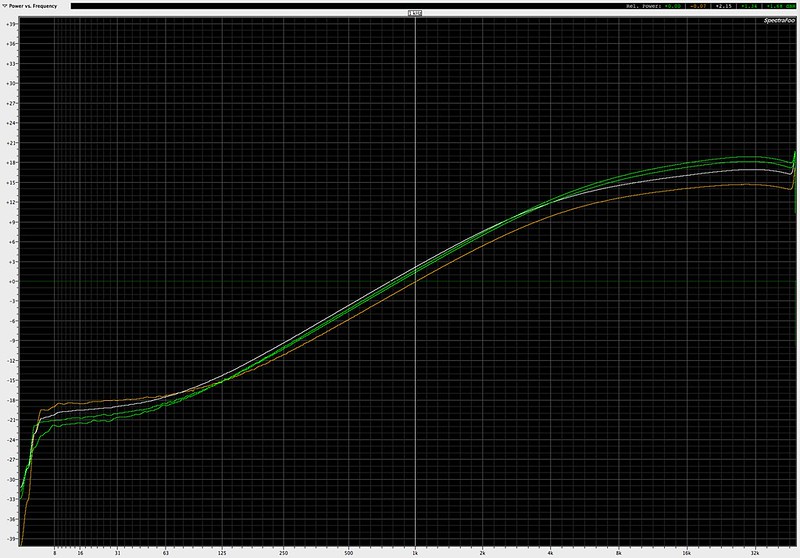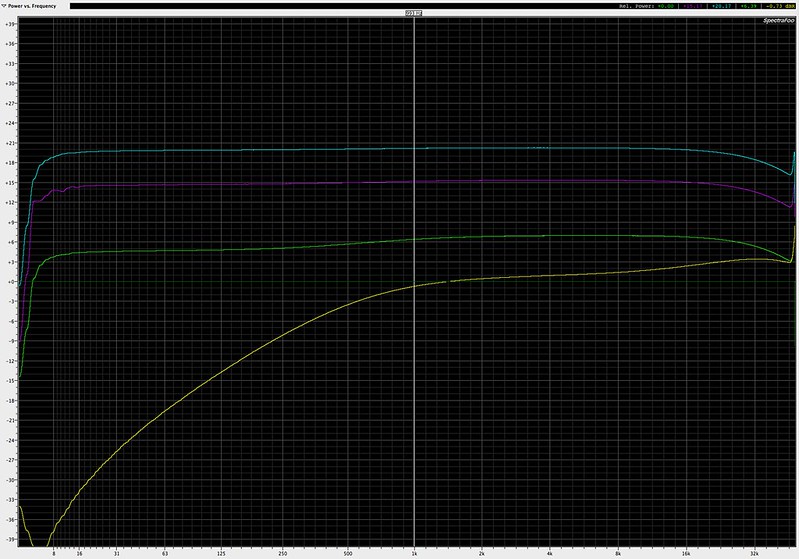Here's the same test as original post, unit wired directly into Audio Precision ATS-1 with 150Ω source and 600Ω load.
You can see a similar slight boost before it starts moving more dramatically at the end of the throw. Sweeping the cursor on the plot confirms the visual.
5:00 on the knob (fully CW, minimum atten)
9:00
8:00
7:30
7:00 (fully CCW, max atten)
Back to MOTU 16A/Spectrafoo, here's 4 of the same amplifier unit compared with same gain, and maximum output attenuation into 10K.
I don’t see this as a problem in this case, after all, I don’t expect anyone is running a preamp with -30 dB or greater of OUTPUT attenuation, and if they are it’s for overload effect.
Next is the same amp as the OP, built in ’T’ set for minimum attenuation (1K load), connected to external Daven decade ’T’ loaded with 600Ω except highest trace (-40, light blue) loaded with 10KΩ.
Purple is -40. The -40 into 600 and -40 into 10K plots are the same shape when visually aligned.
Green is -50 from -40 setting on 10dB/step control plus -10 on 1dB/step control. This is two pads in series.
Yellow is -50 from -50 setting on 10dB/step control.
Note this type ’T’ behaves to greater attenuation, and you can also compare to the post above showing the same ’T’ by itself showing a treble loss due to different loading conditions.
full size pic HERE
In the case of the 1176 one might be running that much attenuation on the input, and should be aware of response changes that are blended with compression artifacts.









